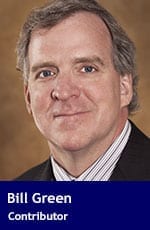 K.M. wrote to ask if she should stop making registered retirement savings plan (RRSP) contributions and instead focus on her tax-free savings account (TFSA).
K.M. wrote to ask if she should stop making registered retirement savings plan (RRSP) contributions and instead focus on her tax-free savings account (TFSA).
With a little personal information from K.M., we decided it would be best for her to focus on her TFSA. Here’s why:
K.M. works in a job she’s likely to leave in the next few years and she’s not really sure what she wants to do next.
She’s middle-aged, single and is in about a 20 per cent effective tax rate. She has no debt, rents her home and thinks she might like to travel for a few years before deciding to go back to work, or she may start her own business.
She has a significant amount of money saved in her RRSP. In fact, she has enough that she could enjoy a comfortable retirement at age 65 with the income from her RRSP along with her Canada Pension Plan (CPP) and Old Age Security (OAS) benefits, without adding any more money to her RRSP.
So far she only has about $10,000 in her TFSA, held in a short-term savings account.
K.M. doesn’t know what she’ll be doing in a few years and she might need to draw from her investments to cover her expenses.
If she’s not working for a whole calendar year, she could and likely should pull some money out of her RRSP account. But if she does this early in the year and then ends up working, she’ll no doubt put herself into a high-income tax bracket, with no ability to put the money back into her RRSP.
So it would be better to live on another source of income until she knows what her annual taxable income is for the year. Then at the end of the year, she can take a tax-effective amount out of her RRSP.
This is where a TFSA can provide great options. If she builds up the money in her TFSA now, while she’s working, she can draw from it tax-free any time.
Since TFSA limits increase annually despite your income and any funds withdrawn can be replaced in the following calendar year, her TFSA room should be more than enough to meet her expected income needs.
So her focus before she leaves her current employment is to get as much money into her TFSA as possible.
During the year when she’s not working, she can draw money out of her TFSA to cover her expenses. Then at the end of the year, if her taxable income is low, she can take a lump sum out of her RRSP. She should then hold this cash in her bank account until the new year. Once in the new year, she can add funds to her TFSA up to her contribution limit. Then she can draw on her TFSA to cover her expense for the next year.
To account for her short-term need for cash, K.M. should also rebalance her portfolio to include some more shorter-term fixed income investments, since she doesn’t want to be forced to sell any of her investments if the markets turn south in the next few years.
She’s going to move about 20 per cent of her portfolio to cash or short-term bonds. This won’t give her the returns she’s been getting on her stocks lately, but it will protect her in case she needs to withdraw some money in the near future.
Bill Green is an hourly financial and estate planner, public speaker and author of The Success Tax Shuffle. Bill has more than 26 years of experience in the financial services industry.
Bill is a Troy Media Thought Leader. Why aren’t you?
The views, opinions and positions expressed by columnists and contributors are the author’s alone. They do not inherently or expressly reflect the views, opinions and/or positions of our publication.


